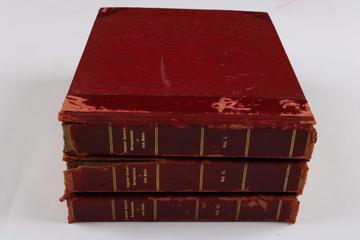
Maze, Frederick William 1871 - 1959
- Nationality:
- Irish
(1871-1959) Knight Inspector General of Chinese Maritime Customs
Frederick William Maze, civil servant and customs official in China, was born on the 2nd July 1871 at 11 Abercorn Terrace in Belfast. He was educated privately and at Wesley College, Dublin. He followed his uncle, Sir Robert Hart, into the Chinese imperial maritime customs service in 1891 and was appointed in 1899 as acting audit secretary at the inspectorate-general in Peking (Beijing). During the Boxer uprising, 1900, he was acting commissioner at Ichang (Yichang). There followed numerous appointments as deputy commissioner and then commissioner in various provinces, and consequent responsibility for the opening of new customs houses. Maze married, in 1917, an Australian, Laura Gwendoline (1888–1972). Three times in 1927 Maze was offered and refused the post of southern inspector-general by the Nationalist government, but in 1928 he accepted an appointment as adviser to the national board of reconstruction. In 1929 he became inspector-general of the maritime customs service. In 1932 he was a member of the national loans sinking fund commission. In 1937 he was appointed counsellor to accompany Dr Kung, envoy-extraordinary, to London for the coronation of George VI.
Maze worked in the customs service through a period of great political upheaval: the fall of the Ch'ing dynasty (China's last) in 1911; the breakdown of the republic; the attempts of the Nationalist Party to unite the country; and the splitting away of the communists and invasions by Japan in the 1930s. However, with great skill and diplomacy, recognized by his creation as KBE in 1932, he was able to keep the service together, particularly during the war with Japan, which controlled many of China's main ports. He preserved the integrity and efficiency of the service by treading a careful line between loyalty to the recognized Chinese government on the one hand and maintaining good relations with the Japanese on the other.
Maze was interested in, and helped to promote, many aspects of Chinese life and culture, in particular its maritime architecture. He assembled an unrivalled collection of scale models of Chinese junks and sampans, built in Hong Kong and Shanghai by Chinese craftsmen under expert supervision. He presented the collection to the British nation by depositing it with the Science Museum in London in 1938. He was also an honorary member of l'Association des Amis du Musée de Marine, Paris.
As the Sino-Japanese War was swallowed up by the Second World War the situation in China became impossible. Soon after the attack on Pearl Harbor Maze was one of almost two hundred Britons and Americans held captive at the ‘Bridgehouse’, once the New Asia Hotel, in Shanghai. On his release the following year he was repatriated to Portuguese East Africa, but he returned to China in an effort to help his staff imprisoned there. He resigned from the service on health grounds in 1943 and was made KCMG in 1944. Foreign governments, to which he had rendered great service over many years, also honoured him; in addition to numerous honours from the Chinese, he received notable distinctions from Japan, Belgium, Portugal, Norway, Denmark, France, and Germany, and was made knight commander of the order of Pius IX by the Holy See.
After serving briefly as adviser to the ministry of finance, Maze joined his wife in retirement in Cape Town, South Africa, moving to Victoria, British Columbia, in Canada in 1948. They were founder members of the Victoria branch of the English-Speaking Union in 1955. Maze died at the Royal Jubilee Hospital, Victoria, on 25 March 1959 and was buried at Royal Oak burial park on 28 March.